With the best printer server, you can enjoy all the benefits of wireless printing without saying goodbye to your trusted old printer. As an extra advantage, you also save money with it, because you do not buy a new printer! In this article, we will recommend and review 5 best printer servers on the market, and guide you to select and buy a suitable and good printer server for your work.
Printer server buying guide: how to select the best printer sever?
A printer server is a small device that serves as an intermediate station between your router and your printer or a network of printers. It controls the communication between your PC and printer using your Wi-Fi network as an intermediary.
You connect one or more printers to the printer server and the printer server to the router. As a result, the printers are directly connected to your WiFi network and you send print jobs from your PC via WiFi to the print server, which in turn forwards them to your printer.
A print server comes in handy in several situations. First of all, a print server is very useful in an environment where several PCs send print jobs and/or several printers are in use.
For example, the server orders the print jobs from different PCs and in some cases you can give a specific job priority (more on that later).
It is also possible to assign a personal printer to a PC connected to the network, which is certainly advantageous for large companies.
Secondly, it is useful for private use where multiple printers and/or PCs are used, and in any context for anyone who does not have a wireless printer.
With a print server you can see all printers to choose from at a glance. A printer server also makes it possible to print via WiFi on a non-WiFi printer. In this way, a print server turns a wired printer into a wireless printer, so it is not necessary to replace your current printer with the best WiFi printer.
Advantages and disadvantages of wireless printing using a print server
Wireless printing has two advantages: first of all, it offers you the possibility to place your printer anywhere; the PC with which you send the print job is not connected to your printer with a cable, so you are not limited in the distance between the two.
In addition, you are not limited in the number of connections of a printer. The maximum number of connected devices to a wired printer depends on the number of connections the printer has. This is not the case with a wireless printer.
You can enjoy these benefits with a print server. The disadvantage is that a print server requires installation on your PC and this can be a bit tricky, especially if you are not technically inclined at all. In this area, WiFi printers and wired printers usually win.

How does a print server work?
You connect the printer server with a cable to your printer (wired or wireless), to your network and to the power grid.
A printer server comes with a software. You install this software and then you get started with setting up the printer server.
Via the software you create or choose an IP address for your print server. This is necessary to find and connect to the printers connected to the print server on the network. Exactly how this works differs per printer server.
It does not matter what kind of printer you connect to the print server – this can be the best A3 printer or a good inkjet printer, but also a photo printer or laser printer. There is a printer server for every printer!
Ethernet vs. wireless
One of the first choices you will be faced with is whether to wire or wirelessly connect the print server to your local network (home internet).
With a wired internet connection, connect the print server to the network with an Ethernet cable. Plug the other end into your router’s Ethernet port or into the Ethernet port on your wall, if you have one.
It is most convenient if you plug it directly into your router, because this port is auto negotiating, which means that it automatically recognizes the connection and takes care of the correct settings itself.
A wireless network card is built into a print server with a wireless Internet connection. You still need to set up the connection between your print server and your WiFi network. How you do this differs per server and is described in detail in the manual.
Wireless network cards
A network card is responsible for the wireless connection to your router and is included in every device that is capable of establishing a WiFi connection.
A wired network card (also known as an Ethernet adapter) allows a device to connect to your router via an Ethernet cable.
A wireless network card (also known as a WiFi adapter) allows a device to connect to a router via WiFi. Combinations are also often encountered; in such a case you get the option of both a wired connection and a wireless one.

Besides making it easier to wire a printer server to the network, Ethernet provides a more stable and more secure connection than a wireless connection.
If possible, I recommend an Ethernet connection, but if you can’t run an Ethernet cable from the router to the place where your printer is located, the wireless version is a good choice.
The advantage of a wireless Internet connection is therefore the possibility to place the printer wherever the wireless connection between the printer server and router is working.
Not sure if you prefer a wired or wireless printer server? Fortunately, there are also printer servers with both options. This combination has the advantage that if one of the two fails, you have the other connection as a backup. The information below may also help you with your choice.
Speed of the wired internet
Ethernet (wired internet) offers speeds of up to 100 Gb/s (gigabit per second), but this is only used in specific cases. The same applies to a speed of 10 Gb/s.
That leaves us with four standard Ethernet speeds: 10 Mb/s (megabits per second), 16 Mb/s, 100 Mb/s and 1000 Mb/s (which equals 1 Gb/s). Most print servers support an Ethernet speed between 10 and 100 Mb/s (indicated as 10/100 Mb/s) which is usually more than sufficient for sending print jobs.
The Ethernet speed also depends on the Ethernet cable. There are five Ethernet cable categories associated with using a printer server:
| Category | Throughput rate | Bandwidth |
|---|---|---|
| Cat 3 | 10 Mb/s | 16MHz |
| Cat 4 | 16 Mb/s | 20MHz |
| Cat 5 | 100 Mb/s | 100MHz |
| Cat 5e | 1000MB/s | 100MHz |
| Cat 6 | 1000 Mb/s | 250MHz |
The throughput rate indicates how fast the cable transmits data. The bandwidth indicates how much data the cable carries at the same time. The video below gives you a helpful explanation in detail.
A print server in combination with a Cat 3 or Cat 4 Ethernet cable is sufficient for private use if you occasionally print a few pages.
If you send relatively many print jobs, a Cat 5 cable is better. This also applies if, for example, you connect two printers to the printer server.
Cat 5e and Cat 6 Ethernet cables are especially suitable for office use. When you connect multiple printers to the print server and send many large print jobs, you benefit from a faster Ethernet connection. Make sure that the printer server also supports this.
Type of wireless internet
The speed of the wireless internet connection mainly depends on the type of wireless internet: the Wi-Fi standard. There are seven Wi-Fi standards whose designation differs from the Wi-Fi standard:
- 802.11b / Wireless-B / Wi-Fi 1
- 802.11a / Wireless-A / Wi-Fi 2
- 802.11g / Wireless-G / Wi-Fi 3
- 802.11n / Wireless-N / Wi-Fi 4
- 802.11ac / Wireless AC / Wi-Fi 5
- 802.11ax / Wireless AX / Wi-Fi 6
- 802.11ax E / Wireless AX E / Wi-Fi 6 E
The first three in the list above are outdated standards. The newness and speed of the Wi-Fi standards increases from top to bottom.

The actual speed of the Wi-Fi standard depends on several factors, including the frequency bands and associated bandwidth, and possible interference factors.
The operation of WiFi is a tricky story and there is a lot involved. What is important to know is whether your router supports the same WiFi standard as the print server.
Wi-Fi 4 is still common, but Wi-Fi 5 is the most common. Wi-Fi 6 is future proof, but you don’t see much support on standard routers and print servers yet, and Wi-Fi 6 E support is rare.
As I said, the actual speed of Wi-Fi depends on several factors, but the maximum speed in ideal conditions of the Wi-Fi standards mentioned above is as follows:
- Wi-Fi 4: 600 Mb/s;
- Wi-Fi 5: 3.5 Gb/s;
- Wi-Fi 6: 9.6 Gb/s;
- Wi-Fi 6 E: 9.6 Gb/s.
For printing, everything from WiFi 4 is fine, but do you print a lot, frequently and do you have multiple printers? Then WiFi 5 is better. Wifi 6 (E) has no added value when it comes to printing.
Most print servers and routers support multiple standards. The connection will work as long as there is at least one standard that matches between the router and the print server.
It’s a shame to buy a printer server with a higher Wi-Fi standard than the router, because then you don’t benefit from the speed of the highest standard even though you pay for it.
Connections
The connection of a wired printer to a PC is usually a USB connection, but it occasionally happens that it is a parallel printer connection. A parallel printer connection is old-fashioned and is therefore mainly seen on older printers.
When there is a parallel printer connection, you have two options: you buy a printer server with the same connection or you purchase an adapter that turns the parallel printer connection into a USB connection.
A printer server with a USB connection is easier to obtain: there are more printers with a USB connection than a parallel printer connection and therefore more printer servers with a USB connection.

In addition to the type of connection, also pay attention to the number of connections. I mentioned earlier that it is possible to connect multiple printers to a print server. This is only the case if the print server also provides multiple connections.
Compatibility
Although many print server software programs are multi- operating system, this is not always the case. Check in advance whether the print server works with the operating system of your computer(s).
Other functionalities
There is always boss over boss, also with print servers. While some print servers just turn a wired printer into a Wi-Fi printer or allow you to connect multiple printers to a single network, a few print servers show off additional features.
For example, there are servers in which you can set task priority. Print jobs are not printed in chronological order, but in the order that you determine. This is especially useful for an office where people are constantly printing documents, but if you print at home a few times a week, you probably won’t use the feature.
The printer priority also has no added value for most individuals. With this function, the print server itself decides which printer to send the print job to if there are several printers connected to the network. The printer makes this decision based on the distance from the computer used to the printer, and on the number of active jobs per printer.
Recommend and review 5 best printer servers in 2023
1. DYMO LabelWriter Print Server
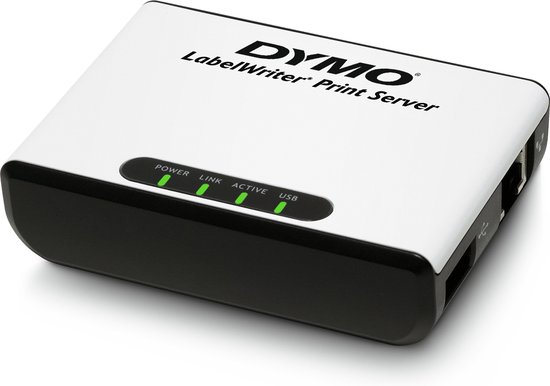
Wireless Connection: Yes
Wireless Connection: Yes
Weight: 363g
2. StarTech.com 1 Port USB Wireless N Network Print Server
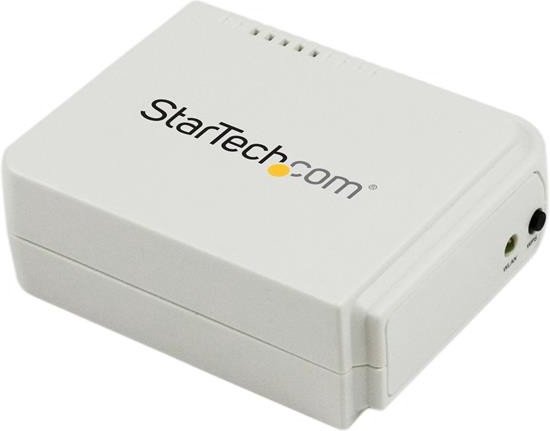
Wireless Connection: Yes
Wireless Connection: Yes
Weight: 283g
3. COCO AMST-606 Door and window sensor – wireless
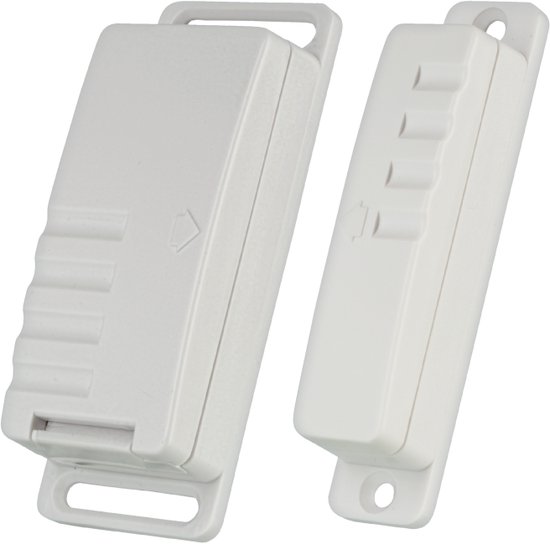
Weight: 90g
4. Konig – SATA to IDE Converter
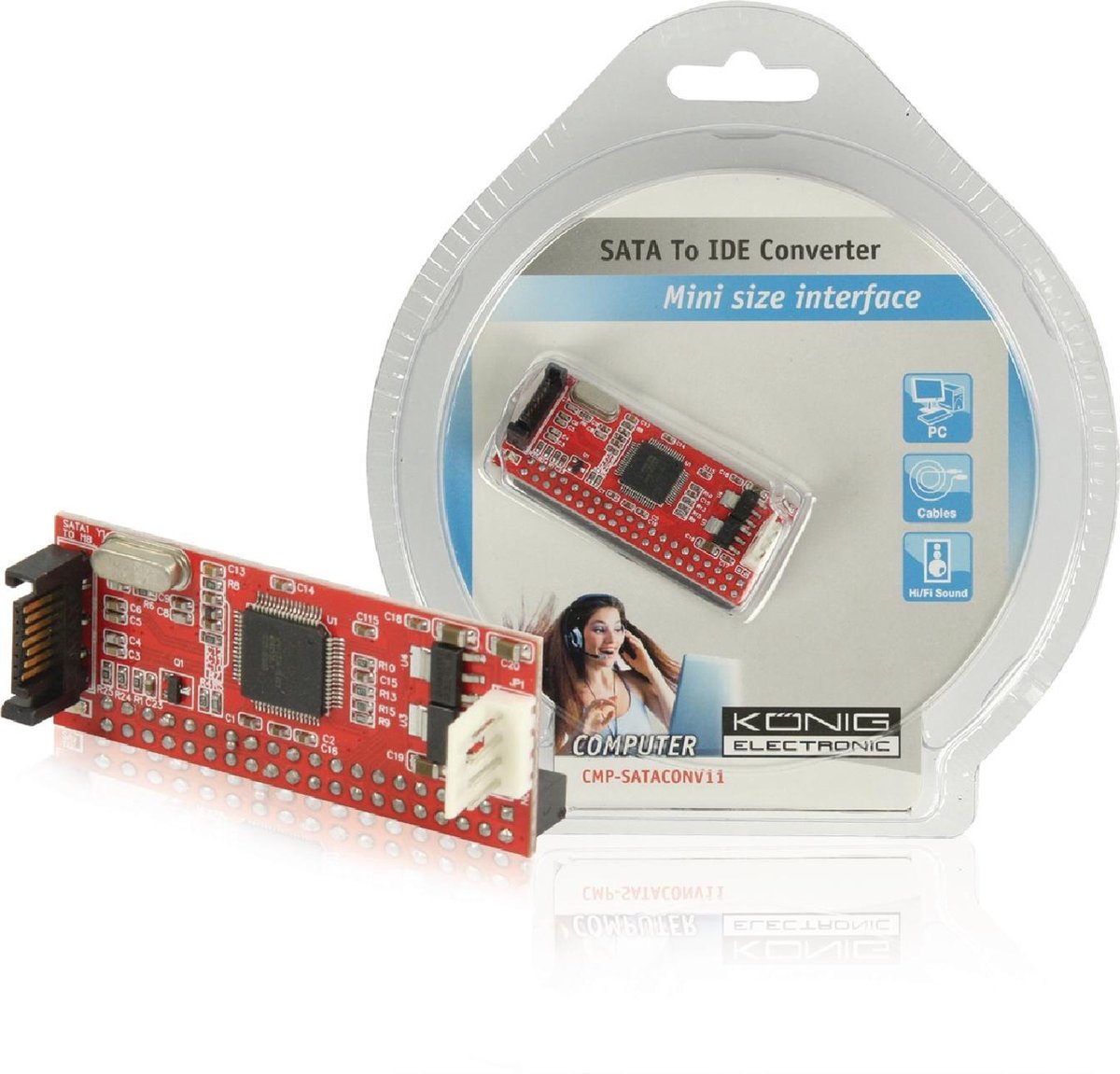
Wireless Connection: No
Wireless Connection: No
Weight: 62g
5. HP Jetdirect 3100w BLE/NFC/Wireless Accessory
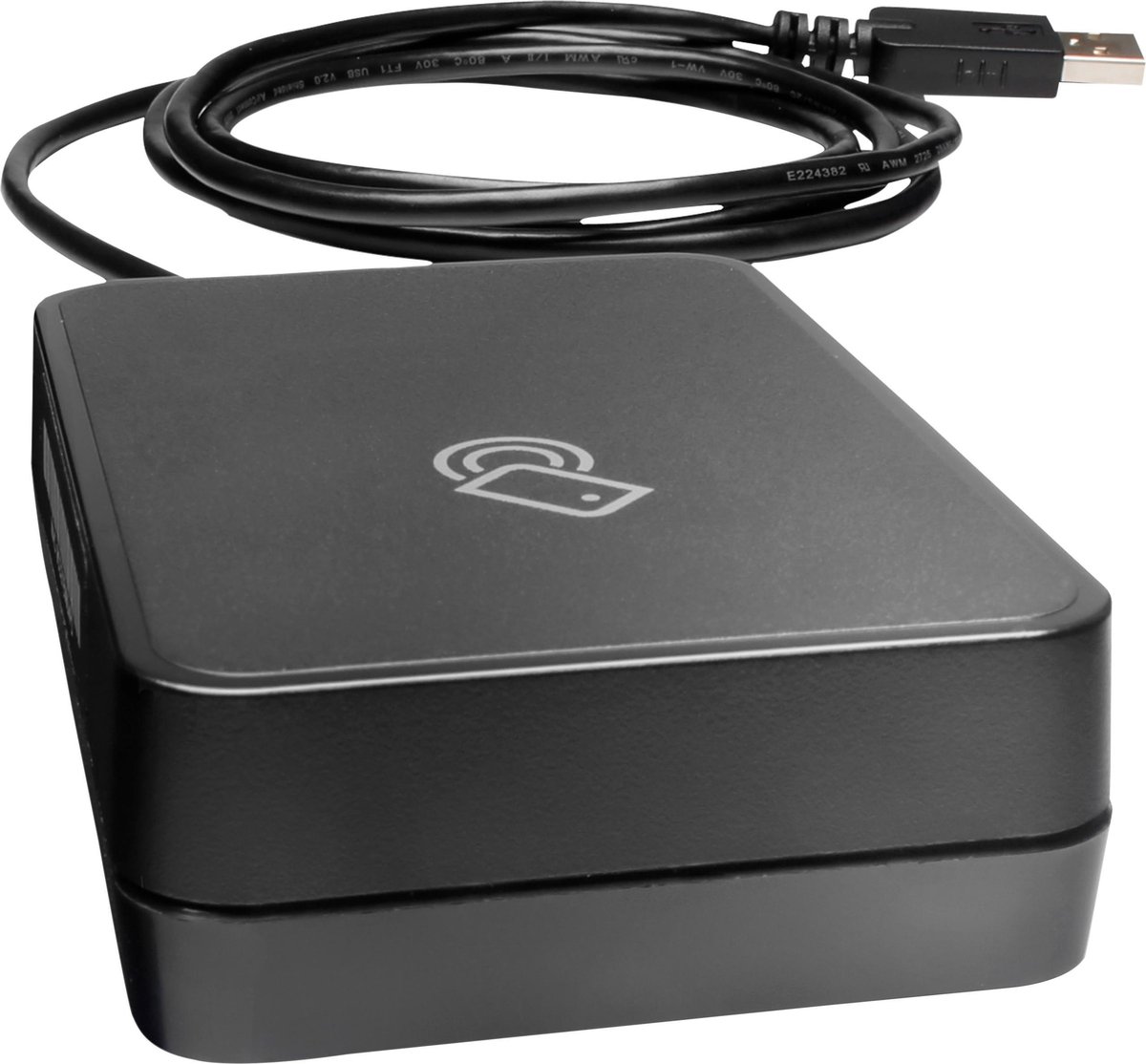
Weight: 325g
Frequently asked questions about printer servers
Below you will find the most frequently asked questions about print servers. If you have a burning question that isn’t answered below, let us know!
Are there alternatives to a print server?
A PC can take over from a print server. You connect the PC to the printer with a cable. After this you create a wireless network on your PC. Connect to your PC’s network to forward print jobs. This method is quite cumbersome and requires an additional PC, and is therefore not recommended in most cases.
If you have an old PC or laptop lying around somewhere that you no longer use, it’s a different story. In that case you can use it!
Are there plug-and-play printer servers?
Most print servers come with software that you must first install on the PC from which you send print jobs. Setting up the print server is done through the supplied software program and is a one-off. Plug-and-play print servers do exist, but they are rare.
How many printers can you connect to a printer server?
You connect the majority of printers and print servers with each other using a USB cable. The maximum number of connections of a print server depends on the number of USB ports where you plug in the printers. There are also printer servers with a parallel printer port; you can usually connect one printer to these printer servers.
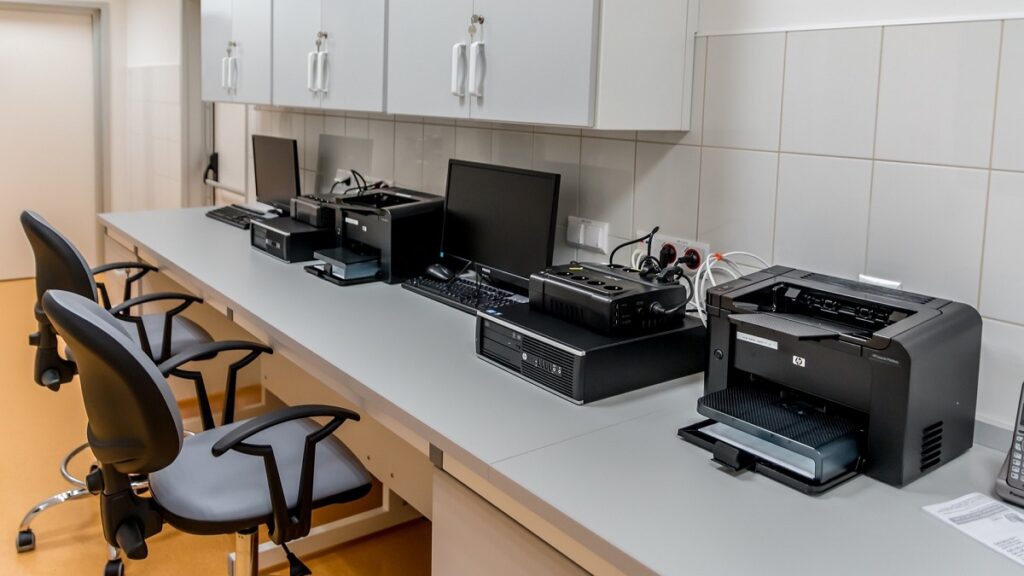
Which print server should I buy?
That’s entirely up to you and your budget; everyone is unique. What I do have for you is a handy table of what I believe is the most important specifications of the best print server. This is how you make the best choice!
| Wireless connection | Weight | ||
|---|---|---|---|
| 1 | DYMO LabelWriter Print Server | Yes | 363g |
| 2 | StarTech.com 1-Port USB Wireless N Network Print Server | Yes | 283g |
| 3 | COCO AMST-606 | Yes | 90g |
| 4 | Konig | No | 62g |
| 5 | HP Jetdirect 3100w BLE/NFC/Wireless Accessory | No | 325g |
Conclusion
There’s a little bit of magic in a printer server. After figuring out your wishes regarding the internet connection, connections, compatibility and other functionalities, you can breathe new life into your old printer, or set up an entire network of printers at the office!
Are you relieved that there is no need to get rid of your trusty old printer? Let us know your comment!